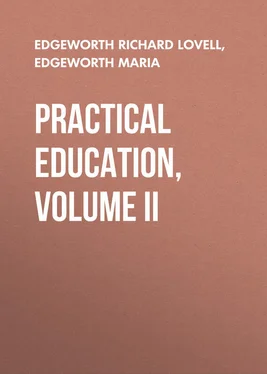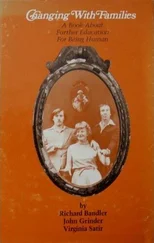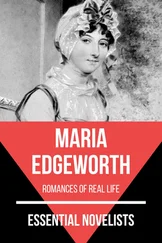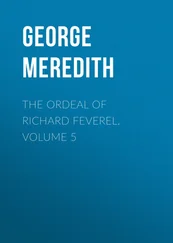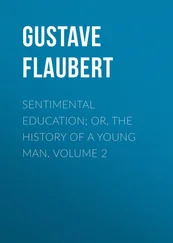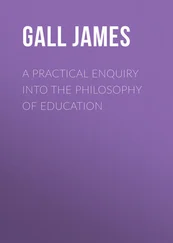Richard Edgeworth - Practical Education, Volume II
Здесь есть возможность читать онлайн «Richard Edgeworth - Practical Education, Volume II» — ознакомительный отрывок электронной книги совершенно бесплатно, а после прочтения отрывка купить полную версию. В некоторых случаях можно слушать аудио, скачать через торрент в формате fb2 и присутствует краткое содержание. Жанр: Прочая научная литература, foreign_edu, foreign_antique, foreign_prose, на английском языке. Описание произведения, (предисловие) а так же отзывы посетителей доступны на портале библиотеки ЛибКат.
- Название:Practical Education, Volume II
- Автор:
- Жанр:
- Год:неизвестен
- ISBN:нет данных
- Рейтинг книги:3 / 5. Голосов: 1
-
Избранное:Добавить в избранное
- Отзывы:
-
Ваша оценка:
- 60
- 1
- 2
- 3
- 4
- 5
Practical Education, Volume II: краткое содержание, описание и аннотация
Предлагаем к чтению аннотацию, описание, краткое содержание или предисловие (зависит от того, что написал сам автор книги «Practical Education, Volume II»). Если вы не нашли необходимую информацию о книге — напишите в комментариях, мы постараемся отыскать её.
Practical Education, Volume II — читать онлайн ознакомительный отрывок
Ниже представлен текст книги, разбитый по страницам. Система сохранения места последней прочитанной страницы, позволяет с удобством читать онлайн бесплатно книгу «Practical Education, Volume II», без необходимости каждый раз заново искать на чём Вы остановились. Поставьте закладку, и сможете в любой момент перейти на страницу, на которой закончили чтение.
Интервал:
Закладка:
As books of reference, the convenient size, and compressed information, of pocket mythological dictionaries, will recommend them to general use; but we object to the miserable prints with which they are sometimes disgraced. The first impression made upon the imagination 9 9 Chapter on Imagination.
of children, is of the utmost consequence to their future taste. The beautiful engravings 10 10 We speak of these engravings as beautiful , for the times in which they were done; modern artists have arrived at higher perfection.
in Spence's Polymetis, will introduce the heathen deities in their most graceful and picturesque forms to the fancy. The language of Spence, though classical, is not entirely free from pedantic affectation, and his dialogues are, perhaps, too stiff and long winded for our young pupils. But a parent or preceptor can easily select the useful explanations; and in turning over the prints, they can easily associate some general notion of the history and attributes of the gods and goddesses with their forms: the little eager spectators will, as they crowd round the book, acquire imperceptibly all the necessary knowledge of mythology, imbibe the first pleasing ideas of taste, and store their imagination with classic imagery. The same precautions that are necessary to educate the eye, are also necessary to form the ear and understanding of taste. The first mythological descriptions which our pupils read, should be the best in their kind. Compare the following account of Europa in a pocket dictionary, with her figure in a poetical gem – "Europa, the daughter of Agenor, king of the Phœnicians, and sister of Cadmus. This princess was so beautiful, that, they say, one of the companions of Juno had robbed her of a pot of paint to bestow on this lady, which rendered her so handsome. She was beloved of Jupiter, who assumed the shape of a bull to run away with her, swam over the sea with her on his back, and carried her into that part of the world now called Europe, from her name." So far the dictionary; now for the poet.
"Now lows a milk-white bull on Afric's strand,
And crops with dancing head the daisy'd land;
With rosy wreathes Europa's hand adorns
His fringed forehead and his pearly horns;
Light on his back the sportive damsel bounds,
And, pleas'd, he moves along the flowery grounds;
Bears with slow step his beauteous prize aloof,
Dips in the lucid flood his ivory hoof;
Then wets his velvet knees, and wading laves
His silky sides, amid the dimpling waves.
While her fond train with beckoning hands deplore,
Strain their blue eyes, and shriek along the shore:
Beneath her robe she draws her snowy feet,
And, half reclining on her ermine seat,
Round his rais'd neck her radiant arms she throws,
And rests her fair cheek on his curled brows;
Her yellow tresses wave on wanton gales,
And high in air her azure mantle sails." 11 11 Darwin. V. Botanic Garden.
CHAPTER XIV
The usual manner of teaching Geography and Chronology, may, perhaps, be necessary in public seminaries, where a number of boys are to learn the same thing at the same time; but what is learned in this manner, is not permanent; something besides merely committing names and dates to the memory, is requisite to make a useful impression upon the memory. For the truth of this observation, an appeal is made to the reader. Let him recollect, whether the Geography and Chronology which he learned whilst a boy, are what he now remembers – Whether he has not obtained his present knowledge from other sources than the tasks of early years. When business, or conversation, calls upon us to furnish facts accurate as to place and time, we retrace our former heterogeneous acquirements, and select those circumstances which are connected with our present pursuit, and thus we form, as it were, a nucleus round which other facts insensibly arrange themselves. Perhaps no two men in the world, who are well versed in these studies, connect their knowledge in the same manner. Relation to some particular country, some favourite history, some distinguished person, forms the connection which guides our recollection, and which arranges our increasing nomenclature. By attending to what passes in our own minds, we may learn an effectual method of teaching without pain, and without any extraordinary burden to the memory, all that is useful of these sciences. The details of history should be marked by a few chronological æras, and by a few general ideas of geography. When these have been once completely associated in the mind, there is little danger of their being ever disunited: the sight of any country will recall its history, and even from representations in a map, or on the globe, when the mind is wakened by any recent event, a long train of concomitant ideas will recur.
The use of technical helps to the memory, has been condemned by many, and certainly, when they are employed as artifices to supply the place of real knowledge, they are contemptible; but when they are used as indexes to facts that have been really collected in the mind; when they serve to arrange the materials of knowledge in appropriate classes, and to give a sure and rapid clue to recollection, they are of real advantage to the understanding. Indeed, they are now so common, that pretenders cannot build the slightest reputation upon their foundation. Were an orator to attempt a display of long chronological accuracy, he might be wofully confounded by his opponent's applying at the first pause,
12 12 V. Gray's Memoria Technica, and the Critic.
Els luk he would have said!
Ample materials are furnished in Gray's Memoria Technica, from which a short and useful selection may be made, according to the purposes which are in view. For children, the little ballad of the Chapter of Kings, will not be found beneath the notice of mothers who attend to education. If the technical terminations of Gray are inserted, they will never be forgotten, or may be easily recalled. 13 13 Instead of William the conqueror long did reign, And William his son by an arrow was slain. Read, William the Con sau long did reign, And Ruf koi his son by an arrow was slain. And so on from Gray's Memoria Technica to the end of the chapter.
We scarcely ever forget a ballad if the tune is popular.
For pupils at a more advanced age, it will be found advantageous to employ technical helps of a more scientific construction. Priestley's Chart of Biography may, from time to time, be hung in their view. Smaller charts, upon the same plan, might be provided with a few names as land-marks; these may be filled up by the pupil with such names as he selects from history; they may be bound in octavo, like maps, by the middle, so as to unfold both ways – Thirty-nine inches by nine will be a convenient size. Prints, maps, and medals, which are part of the constant furniture of a room, are seldom attended to by young people; but when circumstances excite an interest upon any particular subject, then is the moment to produce the symbols which record and communicate knowledge.
Mrs. Radcliffe, in her judicious and picturesque Tour through Germany, tells us, that in passing through the apartments of a palace which the archduchess Maria Christiana, the sister of the late unfortunate queen of France, had left a few hours before, she saw spread upon a table a map of all the countries then included in the seat of the war. The positions of the several corps of the allied armies were marked upon this chart with small pieces of various coloured wax. Can it be doubted, that the strong interest which this princess must have taken in the subject, would for ever impress upon her memory the geography of this part of the world?
Читать дальшеИнтервал:
Закладка:
Похожие книги на «Practical Education, Volume II»
Представляем Вашему вниманию похожие книги на «Practical Education, Volume II» списком для выбора. Мы отобрали схожую по названию и смыслу литературу в надежде предоставить читателям больше вариантов отыскать новые, интересные, ещё непрочитанные произведения.
Обсуждение, отзывы о книге «Practical Education, Volume II» и просто собственные мнения читателей. Оставьте ваши комментарии, напишите, что Вы думаете о произведении, его смысле или главных героях. Укажите что конкретно понравилось, а что нет, и почему Вы так считаете.
